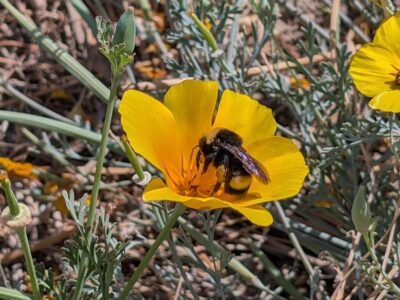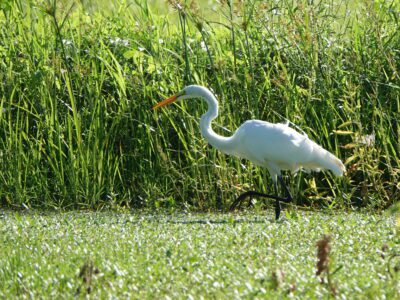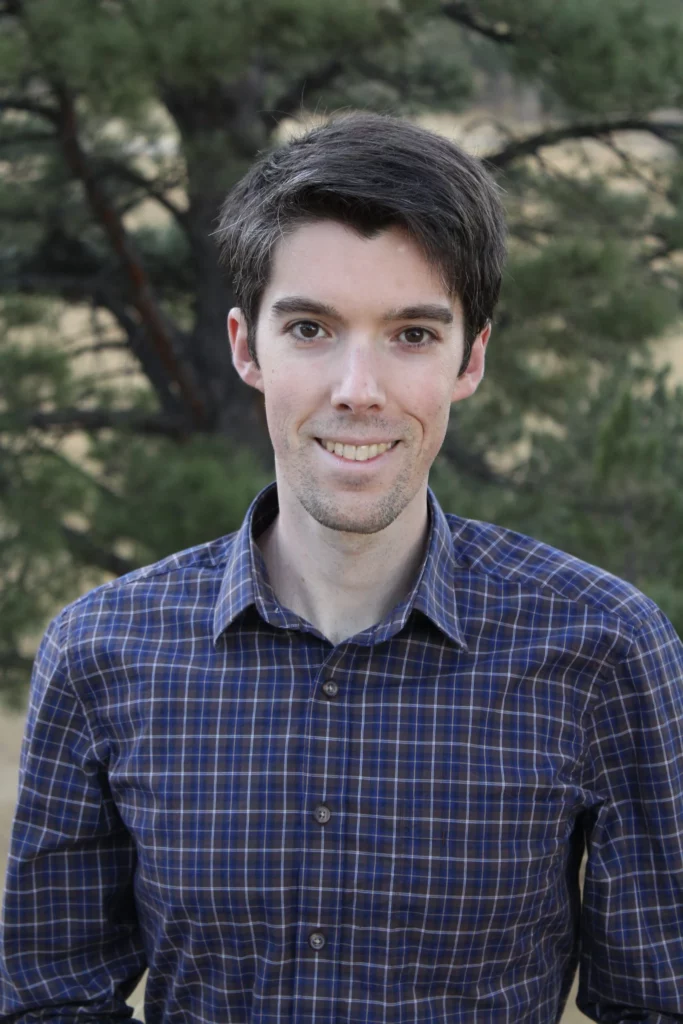
Californians have a long history of hoping and praying for water to end the state’s ongoing cycle of drought. Then, this year’s unprecedented wet winter ended the worst drought on record. And now, we face a potentially even warmer and wetter El Niño winter. We wanted water, but are we ready for the storms ahead?
In addition, the threat of the “Big One” looms on the hopefully distant horizon: a worst-case-scenario megastorm that could cause catastrophic flooding statewide. We know it’s going to happen, but we don’t know when. Should we be scared? Is California prepared?
For this two-part blog series, River Partners sat down with extreme-weather researcher and climate scientist Dr. Daniel Swain, author of the Weather West blog, to share insights into the realities of a changing climate.
- Part 1 – Climate Reality Check with UCLA’s Dr. Daniel Swain
- Part 2 – We Can’t Build Our Way Out: Nature-Based Solutions to Adapt to a Changing Climate
In part one, we dive into the forces shaping California’s extreme weather, the potential impacts of another wet winter, and the risk of a megaflood event.
In part two, below, we talk with Dr. Swain about the power of multi-benefit floodplain restoration that River Partners continues to scale statewide to protect communities from flooding, boost groundwater and water security for the dry years ahead, and protect the natural systems that are our first line of defense in a changing climate.
As Dr. Swain shared, sometimes the science conversations can scare you a little bit. But that might just be a good thing, especially if it sparks urgently needed action to tackle the problem.
Part 2
We Can’t Build Our Way Out: Nature-Based Solutions to Adapt to a Changing Climate
Are we moving in the right direction in building more climate-resilient communities?
Dr. Daniel Swain: We can’t just focus on water scarcity, drought, and wildfire. Though, those are getting worse. We also need to think about the other end of the spectrum: the increase in extreme rainfall events and potentially severe flooding.
That has been a bit historically neglected, especially in the last couple of decades since we’ve had so much record-breaking drought and such extraordinarily severe wildfire seasons.
We’ve lost, as Steinbeck said on more than one occasion, “…all memory of the wet years.” Clearly it’s been it’s always been true in California that we have this high background variability and yet somehow we forget about it. When we’re in a drought, we think about scarcity. And when we’re in a flood regime, we think about overabundance and how to manage it.
But what we really need to be doing is thinking about both—holding them in our in our minds at the same time. We need to be co-managing droughts and floods in a warming climate in a way that is different than if you were only trying to hedge against scarcity, or if you were only trying to mitigate flood risk.
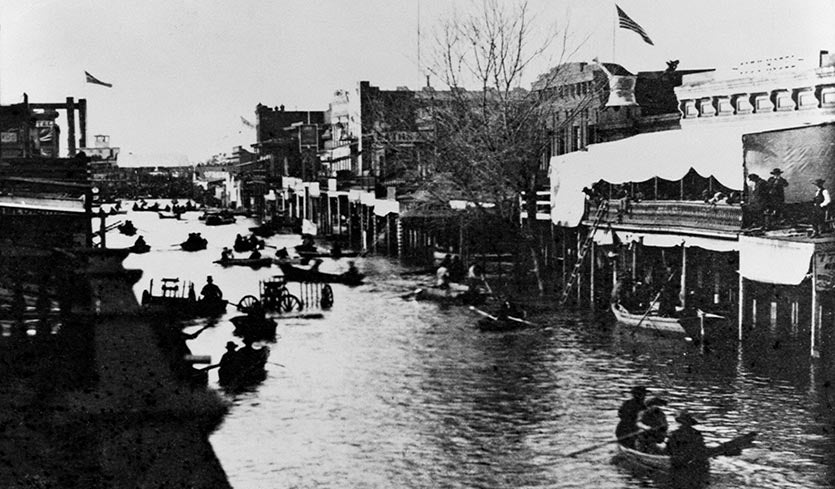
What kinds of interventions or steps need to be taken to prepare for the changing climate in California?
We need the kinds of interventions that are commensurate with the physical reality. Yes, we do need flood control systems in California. And yes, we do need reservoirs to store water for people. That’s just the world we live in. There’s 40 million people in California and there’s a lot of variability.
However, as things change, it’s quite clear that we can’t just build more dams. We can’t just build ever higher flood walls and expect that to work. It is not desirable for other reasons, but more importantly, it just won’t work. If we did it, we’d spend the money, we’d cause the harm that can come with these with these kinds of interventions, and we wouldn’t really gain any new benefits. We can’t build our way out of that exponentially growing atmospheric sponge.
The kinds of interventions we need are things like floodplain restoration and groundwater banking. If you do them right, they have a lot of co-benefits in terms of returning certain systems to a state that is better for ecosystems, and frankly, just more desirable for people to be around.
These are win-win-win interventions. It’s not just because we care about the environment. It’s not just because we like open space in parks. It’s also because that seems to be the kind of thing that matches what the physical science is telling us about what the future is going to look like.
And that future is going to look different.
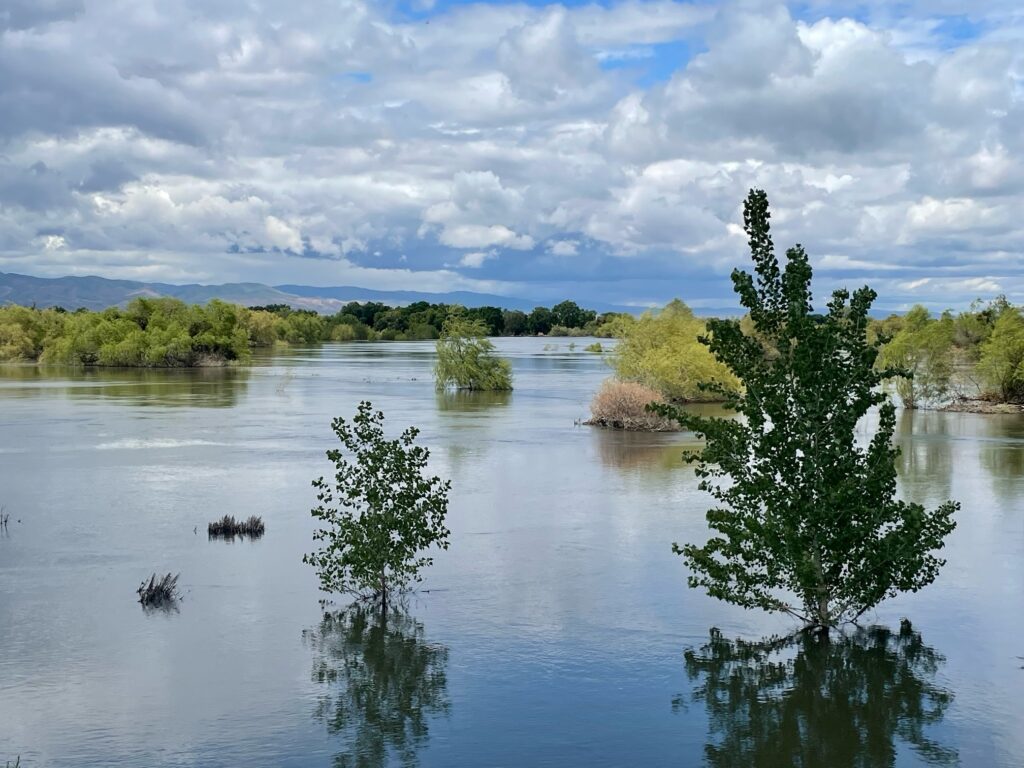
What scale do we need to hit when it comes to floodplain restoration in California?
Well, I think it’s tough.
California is a huge and diverse region geographically and culturally. There’s all sorts of different watersheds, and this interacts in complex ways with where people live, and what spatial opportunities are available for interventions.
But in general, I think in the Central Valley we need to be thinking big. We need large scale, either permanent or temporary restoration. Temporary in the sense that they may still function primarily as agriculture land. You can design things so you can still use it as ag land. Then, if needed—and eventually it will be needed—it can serve as a designated zone that is designed to accommodate flows.
If the incentive structure is right, this could be done at quite large scale and in many places in the Central Valley.
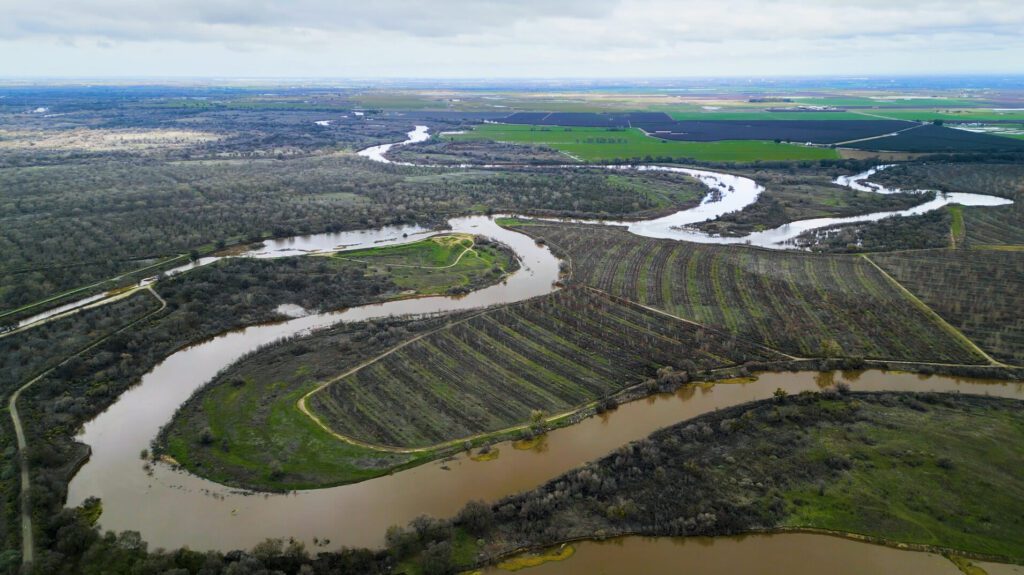
What can we do to prepare for this winter’s storms on a state and individual level?
We need to be thinking about this winter as the kind of winter that at least has the potential for big risk. Even if there’s not a guarantee, even if huge floods are not the likeliest outcome, even if there’s only a 20-30% chance that happens, that’s higher than usual in a given year. Preparing accordingly from an emergency management, flood response perspective would be very prudent even though we don’t know if it’s going to happen, even know if there’s a decent chance it won’t happen.
At a state level, I think the state is somewhat stymied by how quickly things can move in a bureaucracy. And funding—some of the San Joaquin Valley flood protection funds were only restored in the budget this year after outcry after an actual flood was unfolding as it was being cut. I think that says a lot about funding priorities and the reactiveness of policy in this space. We need to be proactive more than reactive. This winter is going to be challenging because there isn’t time to do large scale interventions in the next three months, either funding-wise or just big -project-wise.
On an individual level, it’s awareness and insurance. Paying attention to what’s going on, having emergency supplies, knowing whether you’re in a risk zone or not, those are good things to do anyway. And if you don’t have flood insurance, that’s one thing individuals can do that a lot of people in California should be doing and have not done. Any year is a good year to do it. This year is probably better than usual.
What can floodplain restoration be likened to?
Prescribed fire and wildfire is a very similar pairing to floodplain restoration and flood risk. They both have environmental co-benefits if done correctly. And they both are a desirable intervention that also reduces risk.
But people are afraid of both. Why would you want to let the rivers flood? Why would you want to let the fires burn? Nobody seems to want to have prescribed fires in their backyard, even though it would, in most cases, reduce the risk to their backyard.
Same thing with restored floodplains. Why would we remove that levee? Why do we want to get rid of this dam?
Well, it’s the same story. Fight fire with fire and flood with flood.

How can people find you and support your work?
In terms of where to find me these days, I’m all over the place: social media, the news, Weather West blog.
I think there’s an interesting deeper question here. How do we support people doing contextual work in science? People who are not only just doing the primary research but are really working with folks to integrate it into other facets of society?
That is often difficult to support. Traditional funding agencies want to support the underlying research, but interest and support kind of stops there. The science communication is absent, the working with policymakers.
I do not have a faculty role and this surprises a lot of people. I did that specifically so I could spend as much time as I do with the public-facing side of climate. And the downside of that is that it’s tenuous. We go from year to year. We don’t really know if it’s going to be sustainable. Right now, it’s looking like it won’t be moving forward because it’s just so difficult to get entities to support the contextual work.
I do scientific research, and then I provide context for my own work, for where the field is, and bring folks together from different fields. We just published a paper on prescribed fire and climate change. Am I an ecologist? Am I a practitioner of prescribed fire or fire scientist? No, but my colleagues are. I got to work on this interesting project and push it through because of my unusual role.
This may not sound like it has relevance for floods or rivers, but it does. It’s connected to watershed and ecosystem resilience, water quality, and flood risk. This is a big story now in California with the huge, burned areas immediately upstream of precarious watersheds.
The point is: Everything is connected, and sometimes it’s sometimes quite difficult to get folks to support the dot-connecting.



